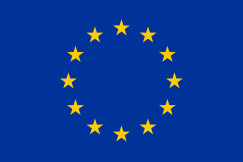Legislation
30 May 2025
Marketing of animal feed Regulation
Legislation
30 May 2025
1. Healthy, balanced and sustainable diets for all European consumers
4. An optimised circular and resource-efficient food chain in Europe
7. Sustainable sourcing in food supply chains
Login / create an account to be able to react
-
97

EC Regulation 767/2009 sets out rules for the marketing and use of animal feed within the EU, covering both food-producing animals and pets. It emphasises safety and quality, requiring that feed be safe, unadulterated, and appropriately labelled.
The regulation mandates clear labelling and ensures feed traceability throughout production, processing, and distribution stages, requiring operators to maintain records of their suppliers.
Editorial team
European Commission - DG SANTE
Topics
EU-27
EU Institutions
-
CoC aspirational objectives
-
-
1. Healthy, balanced and sustainable diets for all European consumers
-
4. An optimised circular and resource-efficient food chain in Europe
-
7. Sustainable sourcing in food supply chains
-
Share
The rules on the marketing of feed materials and compound feed are established in EC Regulation 767/2009, which establishes comprehensive rules for the placing on the market and use of animal feed for both food-producing animals and pets within the EU. The regulation covers any substance or product, including additives, whether processed, partially processed or unprocessed, intended to be used for oral feeding to animals. It outlines strict requirements for the safety, packaging, labelling, and presentation of feed to ensure it is safe, unadulterated, and fit for purpose.
The regulation emphasises traceability at all production, processing, and distribution stages, requiring feed business operators to be able to identify their suppliers and maintain records for tracing purposes. All feed must be labelled clearly and indelibly, detailing the type of feed, operator information, batch number, net weight, list of additives, and moisture content. The presentation of this information must not mislead users.
Packaging rules stipulate that feed be sold in sealed packages or containers, although exceptions exist for bulk products like grain mixtures, compound feed deliveries, and feed blocks.
The regulation operates alongside other EU laws related to animal nutrition, such as those addressing medicated feed and genetically modified organisms, and is supported by guidelines to help businesses comply with labelling and feed categorisation requirements.
Related regulations:
Regulation (EC) No 767/2009 on the placing on the market and use of feed
Regulation (EU) No 68/2013 on the Catalogue of feed materials
Comments (0)
See also
Food improvement agents: Additives, enzymes and flavourings
- Categories
- 2. Prevention and reduction of food loss and waste 3. A climate - neutral food chain in Europe by 2050 4. An optimised circular and resource-efficient food chain in Europe +3 more
Protection against subsidised imports
- Categories
- 2. Prevention and reduction of food loss and waste 3. A climate - neutral food chain in Europe by 2050 4. An optimised circular and resource-efficient food chain in Europe +3 more
Contaminants in food Regulation
- Categories
- 2. Prevention and reduction of food loss and waste 3. A climate - neutral food chain in Europe by 2050 4. An optimised circular and resource-efficient food chain in Europe +3 more




